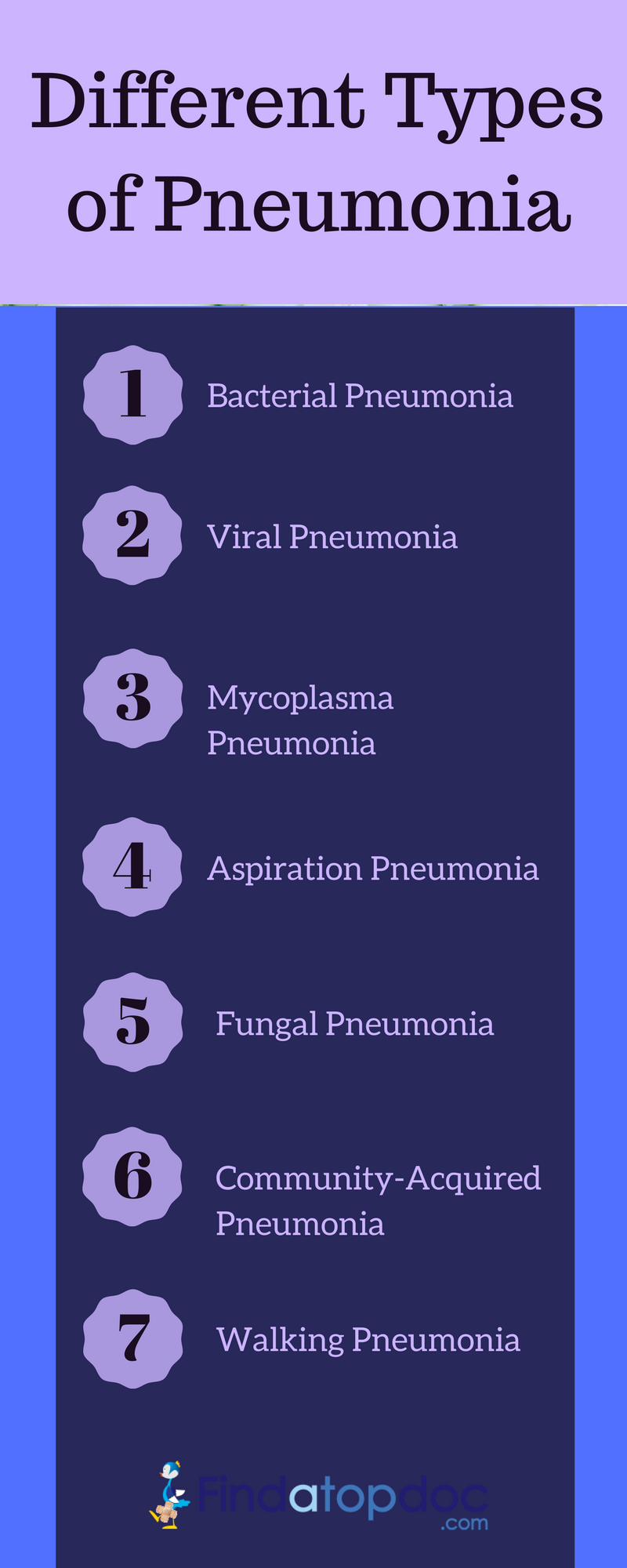
Pneumonia is an inflammation of the airspaces in the lung most commonly caused by infections. Bacteria, viruses, or fungi can cause the infection. There are also a few noninfectious types of pneumonia that are caused by inhaling or aspirating foreign matter or toxic substances into the lungs. Around 50,000 people die each year of pneumonia in the U.S. Although anyone of any age can be affected, pneumonia is more common in elderly people and often occurs when the immune system becomes weakened via a prior infection or another condition. Pneumonia is much more serious when it affects older adults, infants and young children or those with chronic medical conditions. Here is more about some of the most common causes and types of pneumonia.
Causes
Many germs can cause pneumonia. The most common are bacteria and viruses we breathe in. Your body usually prevents these germs from infecting your lungs. But sometimes these germs can overpower your immune system, even if your health is generally good. Pneumonia is classified according to the types of germs that cause it and where you got the infection.
1. Bacterial Pneumonia
Bacterial pneumonia is caused by bacteria instead of a virus, fungi or some other type of germ or foreign substance. It can be caused by a wide range of bacteria and is treated with antibiotics. This is a common type of pneumonia that can sometimes be very serious, leading to hospitalization or even death in worst cases. A large number of people that are hospitalized with pneumonia have bacterial pneumonia. It commonly occurs when a person has another type of illness such as the flu. The immune system is weakened due to the first illness and bacteria causes a secondary infection.
2. Viral Pneumonia
It is triggered by viruses such as influenza, chickenpox, adenoviruses or respiratory syncytial virus. You can catch viral pneumonia via coughing, sneezing or touching an object that was contaminated by an infected person. A patient with viral pneumonia doesn’t just have swollen lungs, but blocked oxygen flow as well. It is said to be responsible for one-third of all pneumonia cases. People who have this type of pneumonia are also most likely to get bacterial pneumonia, too.
3. Mycoplasma Pneumonia
This type of pneumonia is caused by a germ known as a bacterium - which is smaller than bacteria. Mycoplasma pneumonia is often the cause of "walking pneumonia" and gets that name because the symptoms are usually mild. A person with this type of pneumonia is able to function and "walk around" unlike with more serious types of pneumonia where you could end up being in bed or at least at home for a while.
4. Aspiration Pneumonia
Infections or inhalation of food, liquid, gases or dust lead to this type of pneumonia. This illness goes by other names, such as necrotizing pneumonia, anaerobic pneumonia, aspiration pneumonitis, and aspiration of vomitus. People with aspiration pneumonia have inflammation minus the bacterial infection. Very often, aspiration pneumonia can be difficult to treat on some occasions because people who usually acquire this disease are already sick to begin with.
5. Fungal Pneumonia
Fungal pneumonia is caused when spores enter the lungs and widely spread. It is rare and more commonly occurs in people with compromised immune systems. However, it can occur in otherwise healthy adults. One cause of fungal pneumonia in adults is Valley Fever - which occurs in certain parts of the Southwestern United States.
Most people respond to treatment and recover from pneumonia. However, for some people, pneumonia can worsen chronic conditions or cause serious complications. Like your treatment, your recovery time will depend on the type of pneumonia you have, how severe it is, and your health in general. A younger person may feel back to normal in a week after treatment.


